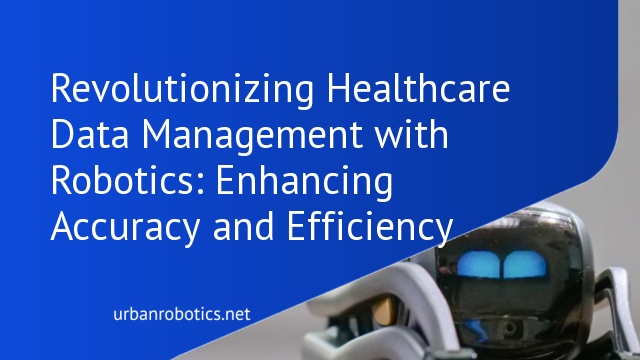Understanding Healthcare Data Management
Efficient data management in healthcare is critical for patient outcomes and operational success. Managing large volumes of data requires advanced systems and technologies to maintain accuracy and accessibility.
Importance of Data Management in Healthcare
Proper data management in healthcare ensures accurate patient records and supports evidence-based decision-making. It enables seamless patient care coordination and enhances healthcare delivery efficiency. Effective data management also helps in complying with regulations, reducing administrative burdens, and improving research capabilities.
Challenges in Traditional Data Management
Traditional data management in healthcare faces several challenges, including data silos which hinder information sharing, manual data entry prone to errors, and outdated systems that lack interoperability. These obstacles can lead to inefficiencies, increased costs, and compromised patient care. Addressing these challenges requires adopting modern technologies and processes to streamline data handling.
Introduction to Robotics in Healthcare
Robotics in healthcare is transforming the way we manage data, providing innovative solutions that enhance accuracy and accessibility. These technologies streamline data handling, leading to improved decision-making processes.
Evolution of Robotics in Healthcare
Robotics has significantly evolved in healthcare over the past few decades. Initially, robots were used primarily for surgical procedures. Now, they assist in various tasks like patient monitoring and data collection. Technological advancements have expanded their roles, reducing human error and increasing efficiency in data management. Robotics now integrate seamlessly with healthcare systems, offering solutions that traditional methods can’t match.
Key Areas Where Robotics Is Used
Robotics plays a crucial role in several healthcare areas. Robots are used in surgeries, performing precise operations with minimal invasiveness. They manage patient data, ensuring accurate records and reducing manual entry errors. Diagnostic procedures benefit from robots, enhancing the accuracy of tests and imaging. In rehabilitation, robots assist patients in recovery with customized, data-driven exercises. These applications demonstrate how robotics improves healthcare outcomes and operational efficiency.
Role of Robotics in Data Management
Robotics plays a crucial role in enhancing data management within healthcare. Automating tasks and ensuring data accuracy are pivotal aspects.
Automation and Accuracy
Robotics automates tedious data entry tasks, reducing human error and increasing accuracy. For example, robots can efficiently handle patient records and billing. Their precision minimizes errors in data entry, making information more reliable. Automation also accelerates data processing, allowing healthcare professionals to focus on patient care rather than administrative duties.
Data Integration and Storage
Robotics facilitates seamless integration of disparate data sources within healthcare systems. For instance, robots can merge patient records from different departments into a unified database. This integration enhances interoperability, ensuring that healthcare providers have access to comprehensive patient information. Robots also optimize data storage solutions, organizing and securing data more efficiently than traditional methods.
Benefits of Combining Robotics with Data Management
Improved Efficiency and Speed
Combining robotics with data management revolutionizes healthcare efficiency. Robotics accelerates data processing, reducing the time needed for data entry and retrieval. For instance, automated data entry systems enable faster patient record updates, allowing healthcare professionals to focus on patient care. This increased speed is crucial for emergency scenarios where timely information can save lives. Data processing times are shortened, streamlining workflows and enhancing overall operational efficiency.
Enhanced Data Security and Compliance
Robotic systems significantly bolster data security and ensure compliance with regulations. Automation minimizes human error in data handling, enhancing the accuracy and confidentiality of patient information. For example, robotic process automation (RPA) encrypts data transmissions, protecting sensitive information from unauthorized access. Systems can also automatically update compliance protocols, ensuring our healthcare data management practices align with industry standards such as HIPAA. This integration ensures robust data protection while meeting regulatory requirements.
Case Studies and Real-World Examples
Hospitals Utilizing Robotics for Data Management
Several hospitals have successfully implemented robotics for data management. At Stanford Health Care, robotics systems streamline patient record handling, reducing manual errors significantly. Cleveland Clinic employs robots for inventory management and patient billing, enhancing accuracy and operational efficiency. Mayo Clinic has integrated robotics with their electronic health records (EHR) systems to automate data entry, improving both speed and precision in accessing patient information.
Success Stories and Outcomes
Implementing robotics in data management has yielded positive outcomes. Massachusetts General Hospital observed a 20% increase in data processing accuracy after adopting robotic systems. At Mount Sinai Health System, robots reduced patient admission time by 30%, improving overall satisfaction. Texas Children’s Hospital noted a 25% reduction in operational costs through automated data management tasks, allowing resources to be redirected towards patient care.
Future Prospects and Trends
Emerging applications of robotics in healthcare data management promise transformative changes.
Technological Advancements
Robotics’ advancements in artificial intelligence (AI), machine learning (ML), and natural language processing (NLP) bolster data management. AI algorithms predict patient outcomes by analyzing extensive datasets. ML enhances predictive analytics, identifying patterns in patient data. NLP simplifies data extraction from unstructured clinical notes, refining documentation accuracy and speed. Integrating these technologies with robotics streamlines data workflows and enhances real-time data processing capabilities.
Potential Challenges and Considerations
Despite these advancements, integrating robotics in healthcare data management poses challenges. High implementation costs could deter smaller institutions. Ensuring data integrity and security against cyber threats remains paramount, given the sensitive nature of healthcare data. Regulatory compliance, such as adhering to HIPAA guidelines, adds complexity to robotic systems’ design and deployment. Addressing these issues is crucial for the sustainable and effective inclusion of robotics in healthcare data management.
Conclusion
The integration of robotics in healthcare data management is revolutionizing how we handle patient information. By enhancing accuracy and efficiency, robotics is setting new standards in the industry. Real-world examples show that hospitals are already reaping the benefits of this technology, leading to better patient care and streamlined operations.
As we look to the future, advancements in AI, ML, and NLP promise even more sophisticated data management solutions. Addressing challenges such as implementation costs and data security will be crucial. Embracing robotics in healthcare data management not only aligns us with modern technological trends but also ensures we provide the best possible care for our patients.





